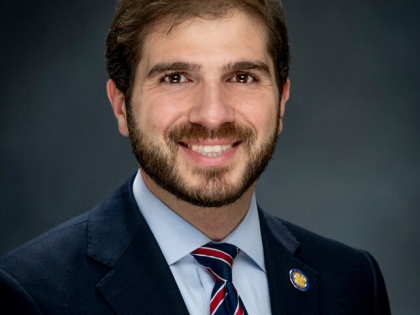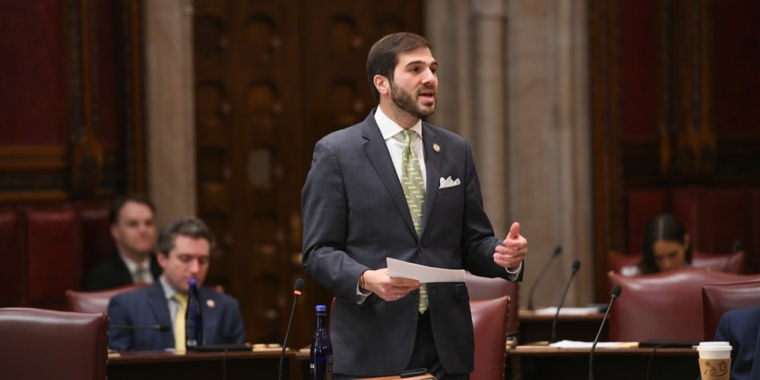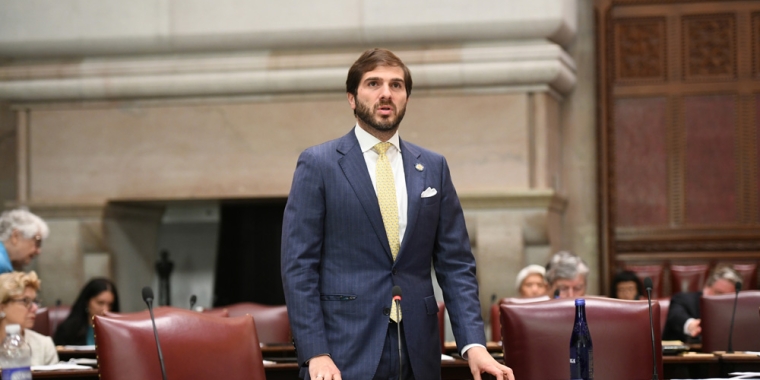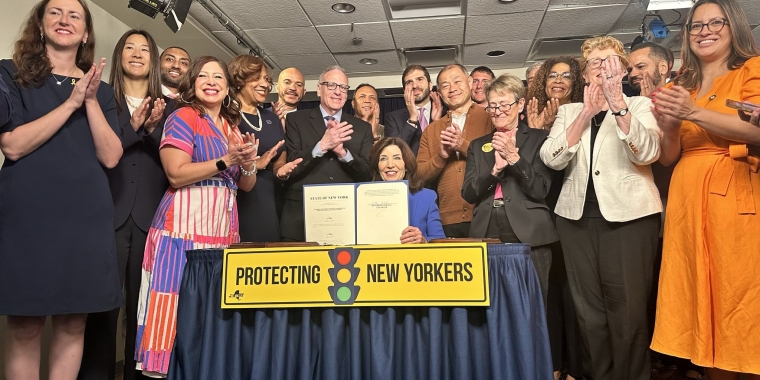
Cyclist Deaths in New York City: Accidents or Crimes?

Sandra Cotuna at a memorial Wednesday for José Alzorriz, a cyclist who was killed in Brooklyn by a driver who ran a red light.
When Umar Mirza Baig barreled through a red light at a terrifying speed and T-boned an S.U.V., sending it flying across the street into José Alzorriz, a cyclist, the moment was caught on dashboard cameras in Brooklyn.
Mr. Alzorriz, 52, a bike-safety enthusiast from Spain, had just rolled up to the traffic light on the opposite side of the road when the S.U.V. careened into him, killing him instantly.
Mr. Baig, 18, was arrested on Wednesday and charged with manslaughter.
With Citi Bike expanding and the creation of more lanes for cyclists, there have never been more people biking in New York City. The push to carve out space for them often angers drivers.
Still, as the number of cyclist deaths climbs in New York — Mr. Alzorriz was the 19th cyclist killed this year, nearly twice the 10 deaths all of last year — there are growing calls to increase the legal culpability of drivers.
Bicycle advocates want stronger laws, as well as a cultural change similar to the one around drunken driving.
“I know we all make mistakes and I don’t hate the driver,” Sandra Cotuna, a friend of Mr. Alzorriz, said in an interview before Mr. Baig, of Rego Park, Queens, had been charged. “But he took my best friend away. If he’s walking away free, to me that is not justice.”
Andrew Gounardes, a state senator who represents parts of southern Brooklyn, called for the young driver to serve jail time.
“If this is the case of someone walking down the street just shooting a gun in the air randomly, and hitting people and killing them, we’d be all up in all arms,” Mr. Gounardes said in an interview. “We’d be prosecuting, we’d be having press conferences, and everyone would want to be sure that that person was held criminally liable.”
But while activists say the law is not protecting cyclists enough, some lawyers say it is too strict for drivers who accidentally cause just that — accidents.
“You can’t criminalize every negligent act,” said Thomas Lucarelli, who has represented cyclists and pedestrians injured by cars. “If a driver is driving reckless or violating the law — driving drunk or intoxicated — that’s criminal charges.”
But, he said, if there is no criminal intent and it is a negligent accident, legally, “there is no criminal accountability.”
Mayor Bill de Blasio has described the 19 deaths of cyclists this year as an “epidemic.”
In comparison, 114 pedestrians were killed last year in traffic fatalities, according to city data. The number of people injured or killed by cyclists is increasing, too. This year, two pedestrians were killed by bikes; last year there had been none.
In court on Wednesday, Jeffrey Lewisohn, Mr. Baig’s attorney, said: “As tragic as it is that someone passed away, it was an accident. He would like the opportunity to finish his GED and go to college.”
“It was a tragic accident and now he’s got criminal charges. It’s not appropriate.”
But in a statement, Mr. Gounardes agreed with the district attorney bringing charges against Mr. Baig.
“Our city’s unofficial policy for too long has been that no matter how reckless, dangerous and harmful a person’s driving, there will never be consequences and oftentimes the driver will remain on the road,” Mr. Gounardes said.
“That needs to change. I stand ready to work with community members and other elected officials to change the law so that drivers who kill or gravely injure others no longer enjoy impunity.”
New York has a raft of laws around traffic violations, but prosecutors and defense lawyers say drivers who cause fatalities are almost never criminally charged, unless there are aggravating circumstances: if the driver was under the influence of alcohol or other substances; intended to harm someone; or was aware of the risk of harm, but chose to ignore it.
Running a red light alone is almost never considered reckless driving, even though in Mr. Alzorriz’s case, it had fatal consequences.
“If you’re not drunk and you stay at the scene, it’s very unlikely that anything is going to happen to you,” said Jon Orcutt of Bike New York, an advocacy group, and the former director of policy at New York City’s Department of Transportation.
“You have penalties in society in order to create a deterrent,” he said. “But I don’t think we’re doing that with regard to how people drive in the city.”
Failing to yield to pedestrians and cyclists, a common cause of accidents, carries a penalty of up to $750. The practice of opening a door in the path of a moving cyclist or car — so-called dooring — is illegal, but carries just a $150 fine. Last month, Em Samolewicz was killed while riding her bike after a driver opened the door of his van into traffic, causing her to crash and tumble. A tractor-trailer ran over her.
To date, only one vehicle-related cyclist death has reached the trial stage. Last October, a bus driver was found guilty of killing a cyclist after a bench trial in State Supreme Court in Manhattan. The judge convicted the driver of failing to yield the right of way, a misdemeanor, and failure to exercise due care, a violation.
Part of the reason so few cases reach trial, lawyers said, is that they are difficult to prove in court. Judges use the so-called rule of two: There has to be evidence of egregious behavior or a gross deviation from normal behavior, and prosecutors must show that the driver violated at least two traffic laws.
Defense lawyers said that criminalizing drivers who fail to exercise due care — by briefly taking eyes off the road to calm a child in the back seat, for example, or being momentarily distracted by a cigarette falling on a lap — is too harsh.
“To saddle someone with a criminal record that could decimate their career, their family, their ability to provide for their family, have a future, is, on its face, not big of a price to pay when someone dies and there’s a tragic, wrongful, horrible death,” said Jeremy Saland, who represented the bus driver in the Manhattan trial.
“At the same time, it’s a high burden and a horrific standard to saddle someone with that criminal record when they weren’t criminally negligent or reckless or intentional.”
Prosecutors have said that the criticism they and the police receive is unfair. In some cases, cyclists are at fault, too, said an official in a New York City district attorney’s office who did not want to be identified because he was not authorized to speak.
Still, changes could be legislated, the official with the district attorney’s office said, citing a proposal to require trucks to have a safety netting to prevent cyclists from falling under wheels.
Facing pressure from advocacy groups and relatives of those killed, Mr. de Blasio’s administration announced a $58.4 million plan last month to reduce cyclist deaths.
Focusing on 10 Brooklyn and Queens neighborhoods that account for nearly a quarter of the city’s cyclist fatalities and serious injuries, the plan, named Green Wave, would build an average of 30 miles of bike lanes with protective barriers each year — up from roughly 20 miles.
Mr. de Blasio has also called for charges against Mr. Baig, the 18-year-old driver who sped through a red light, resulting in the death of Mr. Alzorriz.
“If you kill someone through your negligence, maybe that’s not murder one, I’m not a lawyer, but I’d say it should be a serious, serious charge with many years in prison,” he said last week.
Additionally, a bill sponsored by Councilman Brad Lander of Brooklyn would impound vehicles that get at least five red-light or speed-camera violations in a one-year period. That would take 25,000 cars off the road, according to Mr. Lander, until those drivers took a safety course.
Mr. Lander introduced the bill after a driver plowed through a red light in the Park Slope neighborhood of Brooklyn in March 2018, killing a 5-year-old girl and a 1-year-old boy. The girl’s pregnant mother, the Broadway actress Ruthie Ann Miles, miscarried as a result of injuries from the crash.
Mr. Gounardes has also introduced several proposals, including one that would terminate the license of anyone who has at least three moving violations in a year.
“It is completely and 1,000 percent legitimate to be upset and frustrated and angry at the fact that our criminal justice system does not seem to be able to handle cases where people are killing other people because of their reckless, dangerous and stupid behavior,” Mr. Gounardes said.
Correction: Aug. 21, 2019
Because of an editing error, an earlier version of this article misstated the age of a girl who was killed in Park Slope when a driver ran a red light. The girl was 5, not 4.



